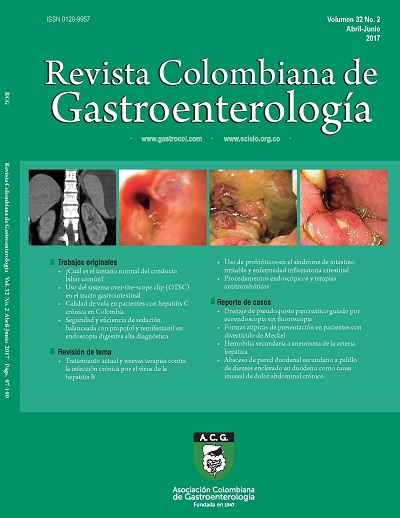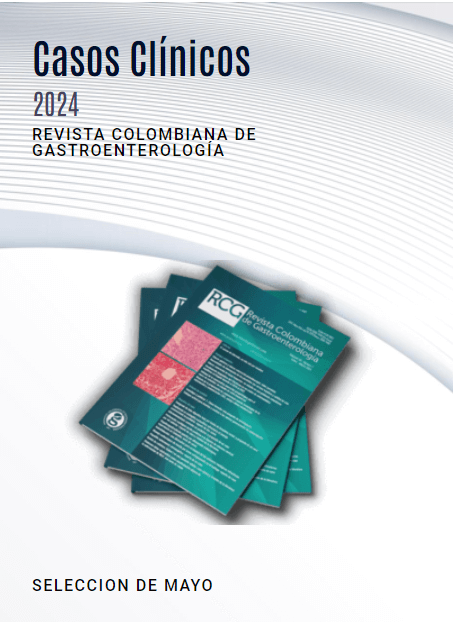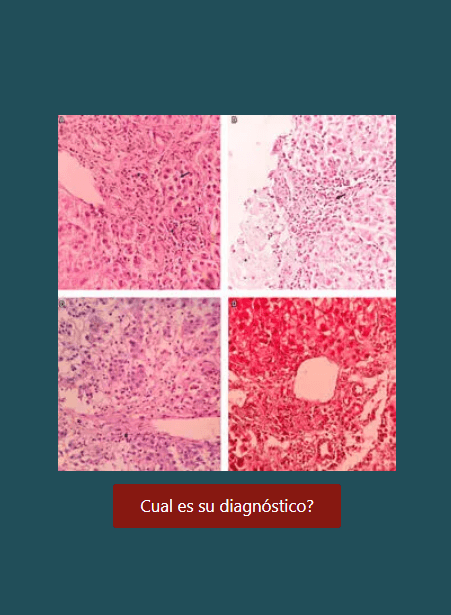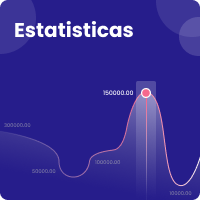¿Cuál es el tamaño normal del conducto biliar común?
DOI:
https://doi.org/10.22516/25007440.136Palavras-chave:
Colédoco, ecografía, ecoendoscopia, colecolitiasisResumo
Tradicionalmente se a señalado que el Conducto biliar común (CBC) mide hasta 6 mm en pacientes con vesícula y 8 mm en los colecistectomizados sin embargo estas recomendaciones se basan en trabajos muy antiguos realizados con ecografía trans-abdominal. La ecoendoscopia es el examen con una mayor sensibilidad y especificidad para evaluar la vía biliar, sin embargo aun no se han realizado estudios en nuestra población que evalúen cual es el tamaño normal del CBC por este método.
Objetivo: Evaluar el tamaño del CBC en pacientes con o sin vesícula biliar
Materiales y Métodos: Se realiza un estudio descriptivo prospectivo en pacientes enviados para la realización de ecoendoscopia a la unidad de gastroenterología del Hospital El Tunal, Universidad Nacional de Colombia, se recolectaron los pacientes que fueron enviados para la realización de una ecoendoscopia diagnostica referidos para la evaluación de lesiones subepiteliales en esófago y/o estomago, una vez se realizo la evaluación de la lesión y se estableció el diagnostico ecoendoscópico, se procede a avanzar el transductor hasta la segunda porción duodenal desde donde se realiza una ecoendoscopia bilio-pancreática. Se midió el tamaño del CBC a nivel de la arteria hepática como es la recomendación para evitar de alterar el tamaño del CBC. Estos datos fueron recolectados en formularios en línea diligenciados durante el procedimiento ecoendoscópico teniendo como base Google drive
Resultados: El trabajo se desarrolla entre enero de 2013 y septiembre de 2013 periodo durante el cual se realizaron 100 ecoendoscopias por lesiones subepiteliales en el tracto digestivo alto. dentro de las características especificas de los pacientes se encontró que el promedio de edad fue de 55.6 años, el 65% de los pacientes fueron mujeres, el 18% de los pacientes tenían colecistectomía previa, de este grupo de pacientes el 50 % fueron mujeres, el tamaño del colédoco en promedio fue 4.88 mm (intervalo entre 2.6 – 7 mm), en el grupo de pacientes con vesícula biliar (88%) el tamaño promedio del colédoco fue de 4.16 mm (intervalo entre 2.6 – 6 mm), en el subgrupo de mujeres con vesícula intacta el CBC el promedio fue de 3.9 mm (intervalo entre 2.6 - 5 mm) y en hombres con vesícula intacta el CBC fue de 4.42 mm (intervalo entre 3-6 mm), en el grupo de pacientes colecistectomizados el tamaño promedio del colédoco fue de 4,88 mm (intervalo entre 3-7 mm), en el grupo de mujeres colecistectomizadas el promedio fue de 4.84 mm (intervalo entre 4.6 - 7 mm), en hombres colecistectomizados el promedio fue de 4.92 mm (intervalo entre 3 - 7 mm).
Conclusiones: Nuestro trabajo muestra que el tamaño normal del colédoco promedio es de 4.16 mm menor a lo aceptado por la literatura y 4.88 mm en pacientes colecistectomizados , esto es interesante por que si se tiene un tamaño mayor obligaría a descartar patología bilio-pancreática con la realización de una ecoendoscopia diagnostica.
Downloads
Referências
Lal N, Mehra S, Lal V. Ultrasonographic measurement of normal common bile duct diameter and its correlation with age, sex and anthropometry. J Clin Diagn Res. 2014;8:AC01-4. Doi: https://doi.org/10.7860/jcdr/2014/8738.5232
Chen T, Hung CR, Huang AC, Lii JM, Chen RC. The diameter of the common bile duct in an asymptomatic Taiwanese population: measurement by magnetic resonance cholangiopancreatography. J Chin Med Assoc. 2012;75:384-8. Doi: https://doi.org/10.1016/j.jcma.2012.06.002
Mahour GH, Wakim KG, Ferris DO. The common bile duct in man: its diameter and circumference. Ann Surg 1967;165:415e9.
Parulekar SG. Ultrasound evaluation of common bile duct size. Radiology. 1979;133:703-707. Doi: https://doi.org/10.1148/133.3.703
Niederau C, Muller J, Sonnenberg A, Scholten T, Erckenbrecht J, Fritsch WP, et al. Extrahepatic bile ducts in healthy subjects, in patients with cholelithiasis, and in postcholecystectomy patients: a prospective ultrasonic study. J Clin Ultrasound 1983;11:23-27.doi: https://doi.org/10.1002/jcu.1870110106
Kaude JV. The width of the common bile duct in relation to age and stone disease: an ultrasonographic study. Eur J Radiol. 1983;3:115-117.
Wu CC, Ho YH, Chen CY. Effect of aging on common bile duct diameter: a real-time ultrasonographic study. J Clin Ultrasound. 1984;12:473-478. Doi: https://doi.org/10.1002/jcu.1870120804
Co CS, Shea Jr WJ, Goldberg HI. Evaluation of common bile duct diameter using high resolution computed tomography. J Comput Assist Tomog.1986;10:424-427.
Burrell MI, Zeman RK, Simeone JF, Dachman AH, McGahan JP, et al. The biliary tract: imaging for the 1990s. AJR AmJ Roentgenol 1991;157:223-233. Doi: https://doi.org/10.2214/ajr.157.2.1853798
Wachsberg RH, Kim KH, Sundaram K. Sonographic versus endoscopic retrograde cholangiographic measurements of the bile duct revisited: importance of the transverse diameter. AJR. 1998;170:669-674. Doi: https://doi.org/10.2214/ajr.170.3.9490950
Perret RS, Sloop GD, Borne JA. Common bile duct measurements in an elderly population. J Ultrasound Med. 2000;19:727-730.
https://doi.org/10.7863/jum.2000.19.11.727
Horrow MM, Horrow JC, Niakosari A, Kirby CL, Rosenberg HK. Is age associated with size of adult extrahepatic bile duct: sonographic study. Radiology. 2001; 221:411-414. Doi: https://doi.org/10.1148/radiol.2212001700
Bachar GN, Choen M, Belenky A, Atar E, Gideon S. Effect of aging on the adult extrahepatic bile duct. A sonographic study. J Ultrasound Med. 2003;22:879-882. Doi: https://doi.org/10.7863/jum.2003.22.9.879
Shanmugam V, Beattie GC, Yule SR, Reid W, Loudon MA. Is magnetic resonance cholangiopancreatography the new gold standard in biliary imaging? Br J Radiol 2005;78:888-93. Doi. https://doi.org/10.1259/bjr/51075444
Sodickson A, Mortele KJ, Barish MA, Zou KH, Thibodeau S, Tempany CM. Three-dimensional fast-recovery fast spin-echo MRCP: comparison with two-dimensional single-shot fast spin-echo techniques. Radiology 2006;238:549-59. Doi: https://doi.org/10.1148/radiol.2382032065
Karvonen J, Kairisto V, Gronroos JM. The diameter of common bile duct does not predict the cause of extrahepatic cholestasis. Surg Laparosc. Endosc Percutan Tech 2009;19:25-28. doi: https://doi.org/10.1097/SLE.0b013e31818a6685
Bowie JD. What is the upper limit of normal for the common bile duct on ultrasound: how much do you want it to be?. Am J Gastroenterol. 2000;95:897-900. Doi: https://doi.org/10.1111/j.1572-0241.2000.01925.x
Holm AN, Gerke H. What should be done with a dilated bileduct? Curr Gastroenterol Rep 2010;12:150-156. Doi: https://doi.org/10.1007/s11894-010-0094-3
Adibi A, Givechian B. Diameter of common bile duct: what are the predicting factors?. JRMS 2007; 12: 121-124
.Eloubeidi MA, Varadarajulu S, Desai S, et al. A prospective evaluation of an algorithm incorporating routine preoperative endoscopic ultrasound guided fine needle aspiration in suspected pancreatic cancer. J Gastrointest Surg 2007;11:813-9. Doi: https://doi.org/10.1007/s11605-007-0151-x
Soriano A, Castells A, Ayuso C, , Shirley R, Heslin MJ, et al. Preoperative staging and tumor resectability assessment of pancreatic cancer: prospective study comparing endoscopic ultrasonography, helical computed tomography, magnetic resonance imaging, and angiography. Am J Gastroenterol 2004;99:492-501. Doi: https://doi.org/10.1111/j.1572-0241.2004.04087.x
Fusaroli P, Saftoiu A, Mancino MG, Caletti G, Eloubeidi MA. Techniques of image enhancement in EUS (with videos).Gastrointest Endosc. 2011;74:645-55. Doi: https://doi.org/10.1016/j.gie.2011.03.1246
Tse F, Liu L, Barkun AN, Armstrong D, Moayyedi P. EUS: a meta-analysis of test performance in suspected choledocholithiasis. Gastrointest Endosc 2008;67:235-44. Doi: https://doi.org/10.1016/j.gie.2007.09.047
Garrow D, Miller S, Sinha D, Conway J, Hoffman BJ, et al. Endoscopic ultrasound: a metanálisis of test performance in suspected biliary obstruction. Clin Gastroenterol Hepatol 2007;5:616-23. Doi: https://doi.org/10.1016/j.cgh.2007.02.027
Palazzo L, O'toole D. EUS in common bile duct stones. Gastrointest Endosc. 2002;56:S49-57. Doi. https://doi.org/10.1016/S0016-5107(02)70086-2
https://doi.org/10.1067/mge.2002.127827
Wani S, Wallace MB, Cohen J, Pike IM, Adler DG, Et al. Quality indicators for EUS. Am J Gastroenterol. 2015;110:102-13. Doi: https://doi.org/10.1038/ajg.2014.387
Becker BA, Chin E, Mervis E, Anderson CL, Oshita MH, Et al. Emergency biliary sonography: utility of common bile duct measurement in the diagnosis of cholecystitis and choledocholithiasis. J Emerg Med. 2014;46:54-60. doi: https://doi.org/10.1016/j.jemermed.2013.03.024
Gandolfi L, Torresan F, Solmi L, Puccetti A. The role of ultrasound in biliary and pancreatic diseases. Eur J Ultrasound. 2003;16:141-59.
https://doi.org/10.1016/S0929-8266(02)00068-X
Matcuk GR Jr, Grant EG, Ralls PW. Ultrasound measurements of the bile ducts and gallbladder: normal ranges and effects of age, sex, cholecystectomy, and pathologic states. Ultrasound Q. 2014;30:41-8.https://doi.org/10.1097/RUQ.0b013e3182a80c98
Pedersen OM, Nordgard K, Kvinnsland S. Value of sonography in obstructive jaundice. Limitations of bile duct caliber as an indext of obstruction. Scand J Gastroenterol 1987;22:975–81. doi: https://doi.org/10.3109/00365528708991945
Hou LA, Van Dam J. Pre-ERCP imaging of the bile duct and gallbladder. Gastrointest Endosc Clin N Am. 2013;23:185-97. doi: https://doi.org/10.1016/j.giec.2012.12.011
Andriulli A, Loperfido S, Napolitano G, Niro G, Valvano MR, Et al, Incidence rates of post-ERCP complications: a systematic survey of prospective studies. Am J Gastroenterol. 2007;102:1781-8. doi: https://doi.org/10.1111/j.1572-0241.2007.01279.x
Coelho-Prabhu N1, Shah ND, Van Houten H, Kamath PS, Baron TH. Endoscopic retrograde cholangiopancreatography: utilisation and outcomes in a 10-year population-based cohort. BMJ Open. 2013 31;3.
Craanen ME, vanWaesberghe JHTM, van der Peet DL, Loffeld RJ, Guesta MA, Mulder CJ. Endoscopic ultrasound in patients with obstructive jaundice and inconclusive ultrasound and computer tomography. Eur J Gastroenterol 2006;18:1289-1292. doi: https://doi.org/10.1097/01.meg.0000243875.71702.68
ASGE Standards of Practice Committee, Maple JT, Ben-Menachem T, Anderson MA, Appalaneni V, Banerjee S, The role of endoscopy in the evaluation of suspected choledocholithiasis. Gastrointest Endosc. 2010;71:1-9. doi: https://doi.org/10.1016/j.gie.2009.09.041
Buscarini E, Tansini P, Vallisa D, Zambelli A, Buscarini L. EUS for suspected choledocholithiasis: do benefits outweigh costs? A prospective, controlled study.Gastrointest Endosc. 2003;57:510-8. doi: https://doi.org/10.1067/mge.2003.149
Karakan T, Cindoruk M, Alagozlu H, Ergun M, Dumlu S, Et al. EUS versus endoscopic retrograde cholangiography for patients with intermediate probability of bile duct stones: a prospective randomized trial. Gastrointest Endosc. 2009;69:244-52.
doi: https://doi.org/10.1016/j.gie.2008.05.023
Romagnuolo J, Currie G, Calgary Advanced Therapeutic Endoscopy Center Study Group. Noninvastive vs. selective invasive biliary imaging for acute biliary pancreatitis: an economic evaluation by using decision tree analysis. Gastrointest Endosc 2005;61:86–97
https://doi.org/10.1016/S0016-5107(04)02472-1
Chen CH, Yang CC, Yeh YH, Yang T, Chung TC. Endosonography for suspected obstructive jaundice with no definite pathology on ultrasonography. J Formos Med Assoc. 2013 Sep 30. pii: S0929-6646(13)00304-5. doi: 10.1016/j.jfma.2013.09.005. [Epub ahead of print] doi: https://doi.org/10.1016/j.jfma.2013.09.005
Rana SS, Bhasin DK, Sharma V, Rao C, Gupta R, Role of endoscopic ultrasound in evaluation of unexplained common bile duct dilatation on magnetic resonance cholangiopancreatography. Ann Gastroenterol. 2013;26:66-70.
Benjaminov F, Leichtman G, Naftali T, Half EE, Konikoff FM. Effects of age and cholecystectomy on common bile duct diameter as measured by endoscopic ultrasonography. Surg Endosc. 2013;27:303-7. doi: https://doi.org/10.1007/s00464-012-2445-7
Strazzabosco M1, Fabris L. Functional anatomy of normal bile ducts. Anat Rec (Hoboken). 2008;291:653-60. doi: https://doi.org/10.1002/ar.20664
Blidaru D1, Blidaru M, Pop C, Crivii C, Seceleanu A. The common bile duct: size, course, relations. Rom J Morphol Embryol. 2010;51:141-4.
Joshi BR. Sonographic variations in common bile duct dimensions. J of Inst of Medicin 2009; 31:3
Park JS, Lee DH, Jeong S, Cho SG. Determination of diameter and angulation of the normal common bile duct using multidetector computed tomography. Gut Liver 2009;3:306-10. doi: https://doi.org/10.5009/gnl.2009.3.4.306
Admassie D. Ultrasound assessment of common bile duct diameter in Tikur Anbessa Hospital, Addis Ababa, Ethiopia. Ethiopian Medical Journal. 2008;46:391-95.
Feng B, Song Q. Does the common bile duct dilate after cholecystectomy?. Sonographic evaluation in 234 patients. AJR. 1995;165:859-86
https://doi.org/10.2214/ajr.165.4.7676981
Majeed AW, Johnson AG. The preoperatively normal bile duct does not dilate after cholecystectomy: results of a five year study. Gut. 1999;45:741-743.
https://doi.org/10.1136/gut.45.5.741
Horrow MM. Ultrasound of the extrahepatic bile duct: issues of size. Ultrasound Q. 2010;26:67-74. doi: https://doi.org/10.1097/RUQ.0b013e3181e17516
Downloads
Publicado
Como Citar
Edição
Seção
Licença
Aquellos autores/as que tengan publicaciones con esta revista, aceptan los términos siguientes:
Los autores/as ceden sus derechos de autor y garantizarán a la revista el derecho de primera publicación de su obra, el cuál estará simultáneamente sujeto a la Licencia de reconocimiento de Creative Commons que permite a terceros compartir la obra siempre que se indique su autor y su primera publicación en esta revista.
Los contenidos están protegidos bajo una licencia de Creative Commons Reconocimiento-NoComercial-SinObraDerivada 4.0 Internacional.

| Métricas do artigo | |
|---|---|
| Vistas abstratas | |
| Visualizações da cozinha | |
| Visualizações de PDF | |
| Visualizações em HTML | |
| Outras visualizações | |


















